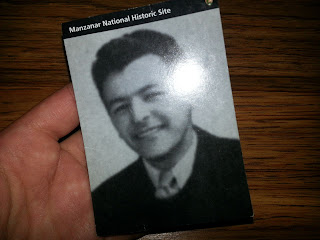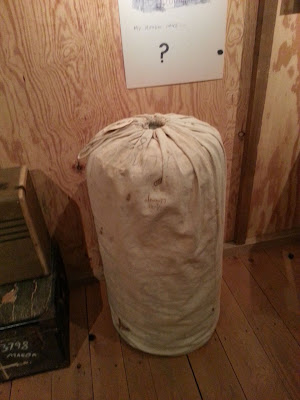The
book describes the experiences of Jeanne Wakatsuki and her family before,
during and following their imprisonment at the Manzanar concentration camp due
to the United States government's internment of Japanese Americans during World
War II. I am currently reading this book
in my English class and its very interesting reading it because its a very
unique book. It goes from the present to the past with flashbacks and then
fasts forwards into the future captivating this story in detail about what was
life like for this young girl and her family having to face all his struggles
at Manzanar.
Thursday, May 9, 2013
Tuesday, May 7, 2013
My Visit At Manzanar
really exciting and interesting because I learned so many new things about what it was like for the Japanese Americans to live in a campsite like this and the conditions that they had to live in. It's really cool reading and learning about some of the people that lived here and imagine myself in there position and how it was like for them. Some of them even attended Roosevelt High School the school in which I currently attend. It is mind blowing thinking that these students could of once sat in my very own seat. I'm glad I had the opportunity to visit this campsite. I really loved it.
 |
| Here's a message that I left. |
Monday, May 6, 2013
Ralph Lazo 1924-1991
Art in Manzanar
This is one of my favorite paintings that was made by an
unknown child in school. "Arts and craft clubs provided opportunities to
share knowledge and culture. Artists
gave lessons in painting and sketching, and provided their own equipment and
supplies. Many had been successful artists before they were sent to Manzanar."
There was artist of all ages old and young painting and creating beautiful
artwork.
Manzanar was one of Ten
Manzanar War Relocation Center was only one of ten camps
where Japanese American citizens and resident Japanese aliens were interned
during World War II. Here are the Flags of all ten camp sites. In 1942, the
United States government ordered more than 110,000 men, women, and children to
leave their homes and detained them in remote, military-style camps.
What was it like sleeping in Manzanar?
While having to move into a new home meant a new bed which wasn't as comfortable the one you had at home. Imagine having to go from sleeping in your room in your bed with a nice mattress to having to make your own bed! All of this happened within a few days short. notice. You were forced to move out and leave all your personal belongings behind only carrying what you could wear and a couple of suitcases per family. When people first arrived at Manzanar they had to fill up a bag with hay and used that as there new bed as time went on they were eventually able to update to a better one. Since they had lots of Japanese coming in they needed a place where they could all stay and live.
Japanese Garden at Roosevelt High School
The Japanese garden at my school Roosevelt High School (RHS)
has been constructed three times as a result of various forces at work within
the community. It is located in Boyle Heights. Shigeo Takayama, president of
the RHS Japanese Club, led the construction of a Japanese garden on the campus.
In 1935, with the help of some Japanese students and parents the garden was
completed. Later these students were forced to abandon their homes as a result
of executive order 9066 and the Japanese Internment. Many of them were unable
to graduate from high school. The original garden built by these students was
destroyed after the bombing of Pearl Harbor. This Garden that is located in my
school shares a little of the History of the Japanese so that's pretty cool!




 |
This is what a Japaneses garden created in Manzanar looks
like.
|
Manzanar monument Cemetery
This is one the Manzanar Monument that is a cemetery for all of those that died. . The monument’s Japanese Kanji characters read, “Soul Consoling Tower” on the front and “Erected by the Manzanar Japanese, August 1943” on the back. People have stopped by to leave items that include offerings like coins, letters, paper cranes, religious items, and many other stuff. In the back you are able to see the beautiful mountains The weather like here in Manzanar is always extremely hot during the summer and very cold during the winter. Making paper cranes are one of the traditions of the Japanese which they are very talented in making such beauty with anything like the way they would create very nice pond gardens out of rocks and were capable of making something that seemed like could never be beautiful into a beautiful place.
Sunday, May 5, 2013
Attack Of Pearl Harbor Was The Spark of Manzanar
The attack of Pearl Harbor was a surprise attack by the Impartial Japanese against the United States Naval base at Pearl Harbor that took place on December 7 1941. This was a great even that ended up leading all Japanese that lived within a certain area in California to be sent off to a camp that is known as Manzanar. They feared that any of the them might of had anything to do with all the chaos that was going on so the government decided they had the right to take away some of the human-rights of the Japanese. Some of them included their freedom they were not allowed to leave this certain camp even if they didn't feel comfortable with the lack of privacy.


Subscribe to:
Posts (Atom)












